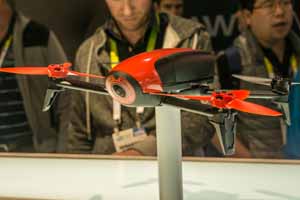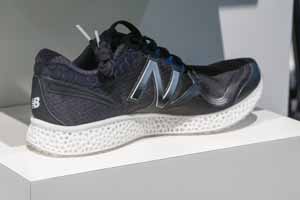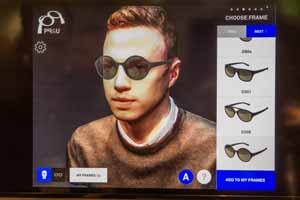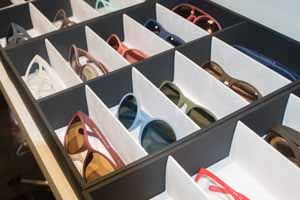Online Magazine
Recent Posts
- Safeguard your Cellphone Photos
- Black & White to Color – Instantly
- Wearing Many Hats
- Video Roundup
- Rescuing Your Blurry Pictures
- Showing Their Age
- What is Your Angle?
- Panorama Photos
- Humorous Photos
- Close Ups
- Fisheye Pictures
- Photo Antiquities
- Printing Big
- Appreciating Scale
- Celebrity Sightings
Tags
More Places to Go
- Free "How-To" Books “How To” books for popular cameras 0
- Vist Us on Facebook keep in touch with us on Facebook 2
Archives
- July 2023 (1)
- March 2023 (2)
- February 2023 (1)
- December 2022 (1)
- October 2022 (1)
- September 2022 (8)
- August 2022 (9)
- July 2022 (1)
- June 2022 (1)
- June 2021 (1)
- May 2021 (1)
- March 2021 (5)
- February 2021 (4)
- January 2021 (2)
- April 2019 (1)
- March 2019 (1)
- February 2019 (1)
- October 2018 (2)
- April 2018 (1)
- March 2018 (4)
- February 2018 (1)
- November 2017 (1)
- August 2017 (1)
- June 2017 (1)
- April 2017 (1)
- March 2017 (5)
- February 2017 (2)
- January 2017 (1)
- October 2016 (1)
- September 2016 (1)
- August 2016 (1)
- July 2016 (1)
- May 2016 (1)
- April 2016 (1)
- March 2016 (2)
- February 2016 (1)
- January 2016 (2)
- December 2015 (1)
- November 2015 (1)
- October 2015 (3)
- April 2015 (1)
- March 2015 (5)
- February 2015 (1)
- January 2015 (4)
- December 2014 (2)
- November 2014 (5)
- October 2014 (2)
- September 2014 (1)
- August 2014 (2)
- July 2014 (1)
- May 2014 (1)
- April 2014 (5)
- March 2014 (5)
- December 2013 (2)
- November 2013 (18)
- October 2013 (1)
- September 2013 (1)
- August 2013 (1)
- July 2013 (1)
- June 2013 (3)
- May 2013 (1)
- April 2013 (2)
- March 2013 (1)
- February 2013 (1)
- January 2013 (1)
- December 2012 (1)
- November 2012 (2)
- October 2012 (2)
- September 2012 (5)
- August 2012 (2)
- July 2012 (1)
- June 2012 (1)
- May 2012 (1)
- April 2012 (4)
- March 2012 (1)
- February 2012 (1)
- January 2012 (3)
- December 2011 (1)
- November 2011 (3)
- October 2011 (1)
- September 2011 (2)
- August 2011 (2)
- June 2011 (3)
- May 2011 (4)
- April 2011 (8)
- March 2011 (8)
- February 2011 (10)
- January 2011 (6)
- December 2010 (11)
- November 2010 (14)
- October 2010 (6)
- September 2010 (12)
- August 2010 (2)
- July 2010 (4)
- June 2010 (3)
- May 2010 (1)
- April 2010 (1)
- March 2010 (2)
- February 2010 (1)
- January 2010 (1)
- December 2009 (1)
- November 2009 (2)
- October 2009 (2)
- September 2009 (1)
- August 2009 (3)
- July 2009 (2)
- June 2009 (1)
- May 2009 (2)
- April 2009 (1)
- March 2009 (2)
- February 2009 (1)
- January 2009 (3)
Seen at WPPI – Quality Printing Papers
12th March 2017
Some Day My Prints Will Come
For decades I was schooled in conventional (film) photography. So it’s natural that I am a lover of photographic prints. And although I enjoy the convenience and portability of electronic display devices, I simply prefer to view my work on hardcopy prints.
Last last year, I ordered a large format printer – the Epson P800. Normally it makes prints up to size 17″ x 22″. Add a roll paper feeder and it can produce enormous panoramas up to 129″ wide. Since the printer was in high demand at the time, my waiting time was about a month for delivery.
When I finally received the printer, I was preoccupied with a lot of other work. To ensure that the printer was working properly I used to make only two or three prints and then set it aside.
Jump ahead two months and I’m attending the WPPI Conference & Expo. I think to myself that I should learn about printing papers to get the best results from the investment in my Epson P800. And so at WPPI I stop at several makers of fine art papers to get educated.
|
|
|
| Hahnemuhle is a German based company that offers a wide variety of papers. I look at their large catalog and am stumped by some of the terminology. So I start asking questions.
What is baryta paper? I’m told that it is paper coated with barium sulphate, a substance used on traditional photographic paper. When baryta paper is used for inkjet printing, it supposedly reproduces the effect of silver halide processing. Many of the paper descriptions include a gsm value. I find that gsm is an acronym for grams per square meter. Thus a square meter of Canvas Metallic 350 gsm paper is heavier than FineArt Baryta Satin 3500 gsm paper. I am also curious about paper with the rag description. I learn that this paper is made from cotton linters or rags and is superior to wood-based paper. |
 |
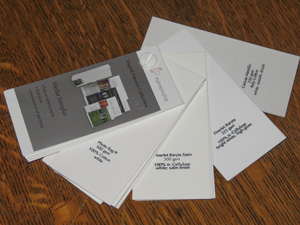 The helpful representative left me with this sampler – a collection of their fine art photography papers and other helpful literature. For more information please visit Hahnemuhle. |
 |
|
|
|
| Namhoon Kim is the Marketing Manager for Durico Media. The company is based in southern California. As you can see from the below photograph, they have a rather large selection of papers.
I helped myself to about a dozen of their print samples all on different paper stock. I find that the samples are the only way to determine if a paper is suitable for one of my prints. Reading a catalog description does not give me the know-how to select a paper – I require hands-on to feel the surface and a sample photograph to give me the visual feedback. For more information, please visit Durico Imaging. |
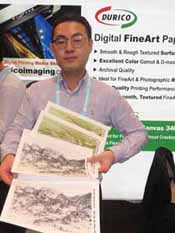 |
 |
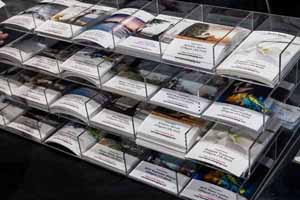 |
|
|
|
| Epson is probably best known as a manufacturer of printers. They also are a large producer of high quality printing papers.
My visit to Epson is to find out more about their printing papers and luckily I am handed a “Print Sample Guide” to take with me. It has their complete line of papers with printed samples: photographic, matte, cotton fine art and canvas. Before I depart the representative shows me their new software Epson Print Layout. This app is for users of Epson professional printers and provides a convenient and elegant way to organize, set up and print your images. If you’re a user of a high end Epson printer, you can download a copy of the Epson software from here. For more information about their papers, please visit Epson. |
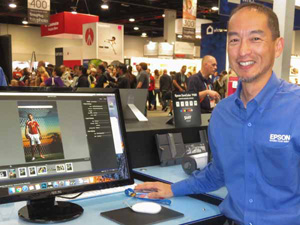 |
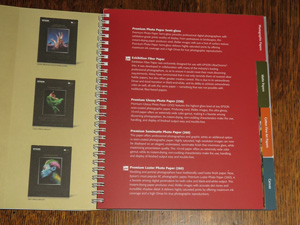 |
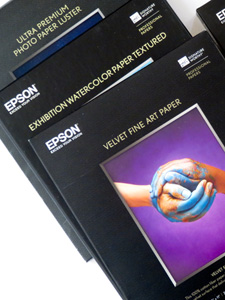 |
|
|
|
| Paperwise, I’m 3 for 3. I walked away with samples from three different manufacturers. So with samples in hand, I am prepared to make my paper choices. Now I’m ready to fire up that printer that has been sitting idle waiting for me. | |
Written by: Arnie lee
Seen at WPPI – Instax instant cameras
07th March 2017
Instant Photography – prints while you shoot
|
|
|
| At the Wedding and Portrait Photography International Conference & Expo held earlier in February, I couldn’t help but notice several attractive displays at the huge Fujifilm booth. | |
|
|
|
| Fujifilm has been producing instant photo cameras since before the turn of the century (2000) as a successor to the groundbreaking Polaroid line.
Their most popular model is the Instax 70 Mini which comes in six vivid colors – white, yellow, blue, gold, red and black. All of these cameras feature auto focus, auto exposure, self-timer, fill flash and tripod socket. They also have a convenient “selfie” mode. Fujifilm’s line of instant photograph cameras are an attractive addition for enhancing wedding, reunion, or party events. Make the rounds among the guests with one of these cameras and there’s an exciting picture for them to see. |
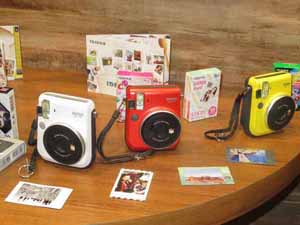 |
|
|
|

Instax Mini film is packaged in sets to produce 10 – 62mm x 46mm photos – about the size of a credit card. In addition to photographs with white borders, the packages of film can be purchased with these designs and colors: black, sky blue, rainbow, candy pop, stained glass, shiny star, comic, air mail, stripe, and Hello Kitty. There is also a monochrome film package for producing black and white photos. |

Here’s a photo of me taken with a colorful border. It takes about 90 seconds from pressing the shutter release until the photograph is fully “developed”. |
|
Here’s a couple of wedding displays that were created from Instax cameras. |
|
 |
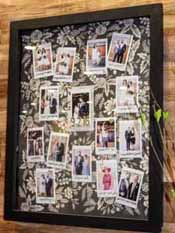 |
|
|
|
| The suggested price of Instax 70 Mini is $110. The Instax Mini Film sells for about $15 for 2 x 10-exposure packages.
There is also an Instax Wide 300 model camera which can take instant photos that are double wide: 62mm x 92mm. For more information about the Instax line of cameras, please visit Fujifilm. |
|
|
|
|
Written by: Arnie Lee
Consumer Electronics Show 2016 – Part II
28th January 2016
Looking at a Few More Gadgets
|
Consumer Electronics Show is a yearly showplace for the newest whiz bang devices that are making their way to the marketplace. I returned from CES with a stack of brochures and notes about some of these products. Here’s a few more of them that interested me most at this year’s CES. |
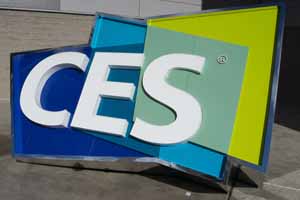 |
Parrot Bebop 2 – Lightweight Drone | |
|
Further down one of the aisles there was a large crowd gathered. This was the Parrot booth where I witnessed a cool choreographed “dance” of a fleet of colorful drones. The Bebop 2 drone is lightweight with 3-axis stabilization. The integrated 14MP camera with fisheye lens records in either still or video modes which you can aim through 180-degree direction. You control the Bebop 2 with either your smartphone or tablet which shows you what the camera sees. The battery can power the drone for about 25 minutes. | |
The Bebop 2 also has a built-in GPS receiver that you can programmed to follow a pre-set path. I’m guessing that this is how the choreography was performed. The suggested price is $549. For more information please visit Parrot. |
|
Robo 3D R1+Plus – 3D Printer | |
|
I’ve owned an early model 3D printer for a couple of years. At first I printed many of the samples that you can download for free from many online sites. This certainly expands the use of the printer but only for those owners who have the know-how and expend the effort to find the projects. The Robo R1+Plus is one of only a few 3D printers that are available at retail stores. It offers one of the largest build size for this class of printer: 10″ x 9″ x 8″.Robo has wisely created a set of ready to print projects that can be offered at the point-of-sale. A potential buyer can see some of the many things he/she can create with the printer. |
|
 |
 |
| The suggested price for the R1+Plus is $799. For more information please visit Robo 3D.
|
|
New Balance Shoe – Midsole Made with 3D Printer | |
|
At the 3D Systems booth, sports shoe maker New Balance was showing a new running shoe with a midsole made with a 3D printer. The midsole is the result of a special powder that offers strength and durability. |
|
| For more information please visit New Balance.
|
|
pq Custom Eyewear – Printed with a 3D Printer | |
|
It took me a few minutes to figure out what this display was about but it’s turned out to be very interesting. This booth was pq Eyeware by noted designer Ron Arad. These are custom designed frames without hinges and manufactured using a 3D printer made by 3D Systems. | |
| For more information please visit pq Eyeware.
|
|
Written by: Arnie Lee
